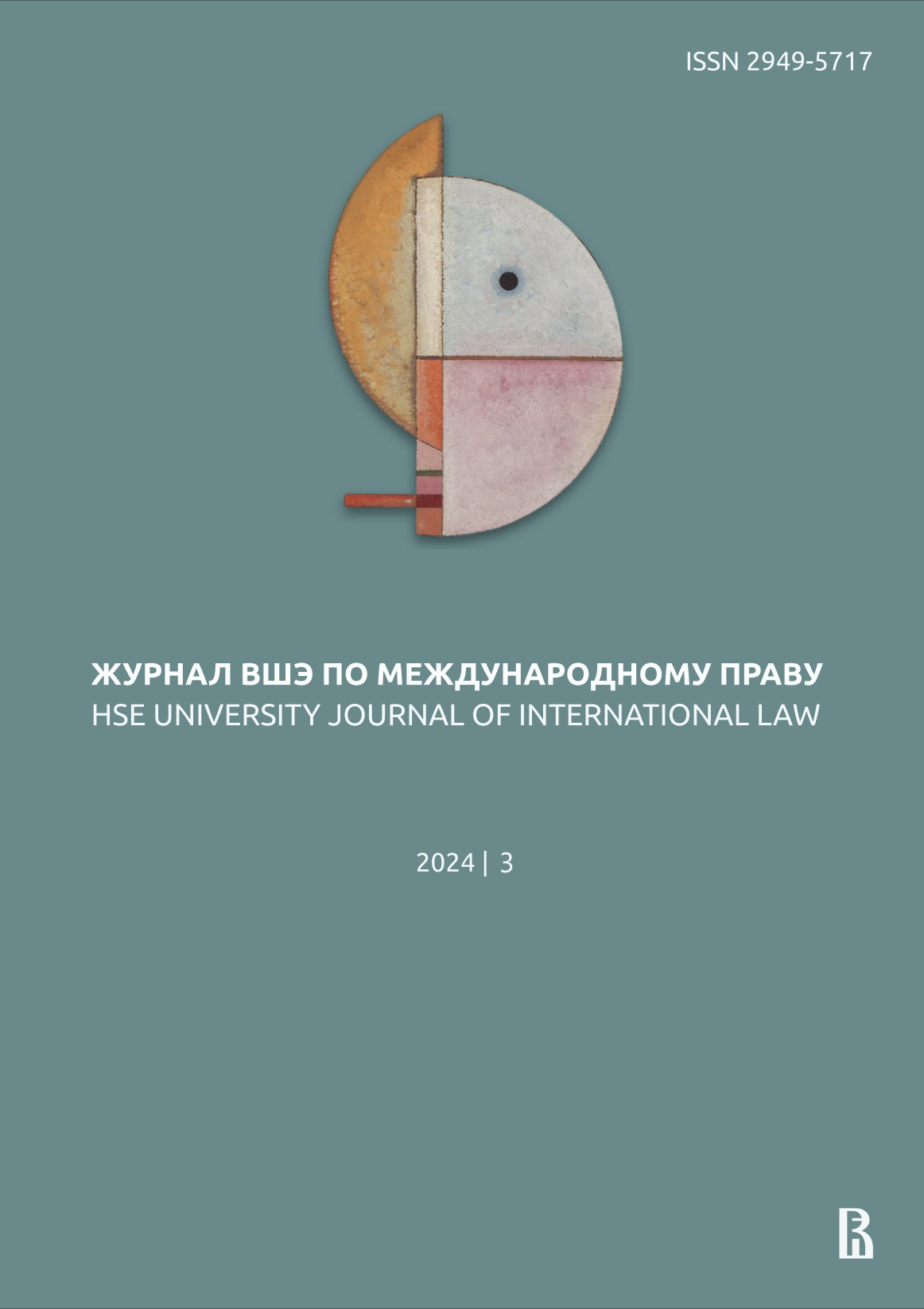Commentary on the Council of Europe Framework Convention on Artificial Intelligence, Human Rights, Democracy and the Rule of Law
Abstract
The article is one of the first attempts to provide a scientific commentary on the Council of Europe Framework Convention on Artificial Intelligence, Human Rights, Democracy and the Rule of Law of 2024 (hereinafter — the Convention). The authors analyse both general characteristics of the Convention — its legal nature, object and purpose — and specific issues concerning the implementation of the principles of democracy and the rule of law enshrined in this international treaty, the procedure for the use of legal remedies, the scope of parties, as well as the mechanisms of implementing the Convention at the national level. Furthermore, the article contains a comparative legal analysis of this treaty with the European Union Act on Artificial Intelligence, which, prior to the adoption of the Convention, constituted a unique exemplar of the most comprehensive international legal document regulating the utilisation of this technology. The authors conclude that, despite embodying a “soft” model of international legal regulation in the sphere of artificial intelligence, the Convention is nevertheless capable of stimulating the development of domestic legislation in the States Parties. Furthermore, some of the approaches used in this treaty could be considered for the development of international legal instruments dedicated to artificial intelligence within the BRICS, SCO and/or EAEU.
Downloads
References
Butler J. (2020) The Corporate Keepers of International Law. American Journal of International Law, vol. 114, no. 2, pp. 189–220. DOI: https://doi.org/10.1017/ajil.2020.1
Crawford K. (2021) The Atlas of AI: Power, Politics, and the Planetary Costs of Artificial Intelligence, New Heaven: Yale University Press. DOI: https://doi.org/10.12987/9780300252392
Donahoe E., Metzger M. (2019) Artificial Intelligence and Human Rights. Journal of Democracy, vol. 30. no. 2, pp. 115–126. DOI: https://doi.org/10.1353/jod.2019.0029
Eubanks V. (2018) Automating Inequality. How High-Tech Tools Profile, Police, and Punish the Poor, New York: St. Martin’s Press.
Filgueiras F. (2022) Artificial Intelligence Policy Regimes: Comparing Politics and Policy to National Strategies for Artificial Intelligence. Global Perspectives, vol. 3, no. 1, pp. 323–362. DOI: https://doi.org/10.1525/gp.2022.32362
Ho C. W-L., Caals K. (2024) How the EU AI Act Seeks to Establish an Epistemic Environment of Trust. Asian Bioethics Review, no. 16, pp. 345–372. DOI: https://doi.org/10.1007/s41649-024-00304-6
Janig P. (2022) Extraterritorial Application of Human Rights. In: Binder C., Nowak M., Hofbauer J., Jang P. (eds.) Elgar Encyclopedia of Human Rights, vol II, Edward Elgar Publishing. DOI: https://doi.org/10.4337/9781789903621.extraterritorial.application.human.rights
Johnson J. (2019) Artificial Intelligence and Future Warfare: Implications for International Security. Defense & Security Analysis, vol. 35, no. 2, pp. 147–169. DOI: https://doi.org/10.1080/14751798.2019.1600800
Kolfschooten H. v., Shachar C. (2023) The Council of Europe’s AI Convention (2023–2024): Promises and Pitfalls for Health Protection. Health Policy, vol. 138, pp. 1–5. DOI: https://doi.org/10.1016/j.healthpol.2023.104935
Koskenniemi M. (2006) From Apology to Utopia: The Structure of International Legal Argument. Cambridge, Cambridge University Press. DOI: https://doi.org/10.1017/CBO9780511493713
Lee J. (2022) Artificial Intelligence and International Law, Springer. DOI: https://doi.org/10.1007/978-981-19-1496-6
Lütz F. (2024) The AI Act, Gender Equality and Non-Discrimination: What Role for the AI Office?. ERA Forum 25, pp. 79–95. DOI: https://doi.org/10.1007/s12027-024-00785-w
Milanovic M. (2011) Extraterritorial Application of Human Rights Treaties: Law, Principles, and Policy, Oxford University Press. DOI: https://doi.org/10.1093/acprof:oso/9780199696208.001.0001
Nemitz P. (2018) Constitutional Democracy and Technology in the Age of Artificial Intelligence. Philosophical Transactions of the Royal Society A: Mathematical, Physical and Engineering Sciences, vol. 376, № 2133. DOI: https://doi.org/10.1098/rsta.2018.0089
Novelli C., Casolari F., Rotolo A. et al. (2024) AI Risk Assessment: A Scenario-Based, Proportional Methodology for the AI Act. Digital Society. vol. 3, no. 13, pp. 1–29. DOI: https://doi.org/10.1007/s44206-024-00095-1
Rittberger B., Schimmelfennig F. (2007) The Constitutionalization of the European Union. Routledge. DOI: https://doi.org/10.4324/9781315878515
Rusinova V., Korotkov S. (2021) Mandatory Corporate Human Rights Due Diligence Models: Shooting Blanks? Russian Law Journal, vol. 9, № 4, pp. 33–71. DOI: https://doi.org/10.17589/2309-8678-2021-9-4-33-71
This work is licensed under CC BY-NC-ND 4.0


